Everyone knows that solar panels derive their energy from the sun. However, few people have a detailed understanding of the way they work. That is why we have put together this convenient guide to explain the workings of a solar panel and help you gain a better understanding of this phenomenon.
At DualSun, we want our clients to really understand how solar panels work and how to use them so that their purchase corresponds to their needs.
—
SUMMARY
- Solar radiation
- Types of solar panels
- How do photovoltaic solar pado they generate electricity?nels work and how
- How does a thermal solar panel work?
- How does a hybrid solar panel work?
- Other parts of a solar installation
- What is an inverter and what does it do?
- How is efficiency tracked?
- How are solar panels used for residential homes?
Solar radiation
The key element involved in photovoltaic energy is something referred to as solar radiation, which is the initiating force behind the system’s operation. There are three kinds of solar radiation.
The first kind is direct radiation. It is the easiest to understand. The sun’s rays follow a direct path to the solar panels without encountering any obstacles.
Then there is diffuse radiation. This kind is of radiation is indirect because it is scattered by clouds and molecules in the atmosphere as it travels through them.
The third and last type is reflected radiation. This refers to sunlight that has been reflected off of an obstacle such as water or snow before striking the solar panels.
Keep in mind that a working solar panel makes use of all three radiation types. They should all be taken into account in the calculation. Models of different sky typologies exist for the purpose of merging this complexity. Our solar simulator MyDualSun uses them to predict the power output of DualSun panels!
Types of solar panels
There are several types of panels. Each one has its own set of strengths and, most importantly, each one meets a particular need.
The first type is the well-known photovoltaic panel. This is the one that comes to most people’s minds when they think of solar panels. The photovoltaic panel produces electricity.
Then there is the thermal panel, which works differently. It produces hot water, more often used in heating domestic water.
The final and least known solar panel is the hybrid panel, bearing a name that reflects its versatility. This panel has the unique property of combining the advantages of photovoltaic and thermal systems, thus maximizing its output.
How do photovoltaic solar panels work and how do they generate electricity?
How a photovoltaic solar panel works

This panel operates on the basis of a phenomenon known as the photoelectric effect. The photoelectric effect occurs when certain materials are struck by light and they emit electrons.
A photovoltaic solar panel is made up of a certain number of silicon cells, usually 60 to 62.
The panel consists of two layers connected to each other by conducting wires. The upper layer has a surplus of electrons whereas the lower layer has a deficit of electrons.
What purpose do these two layers serve? Generating something called potential difference and thereby creating an electric current. Batteries function according to this well-known phenomenon.
In concrete terms, the photons from the sunlight strike the panel and generate the photoelectric effect. The electrons that are emitted upon impact pass through the two layers to produce an electric current.
On average, only 20% of the sun’s energy is converted into electricity with this type of panel. The rest is converted into heat and therefore wasted.
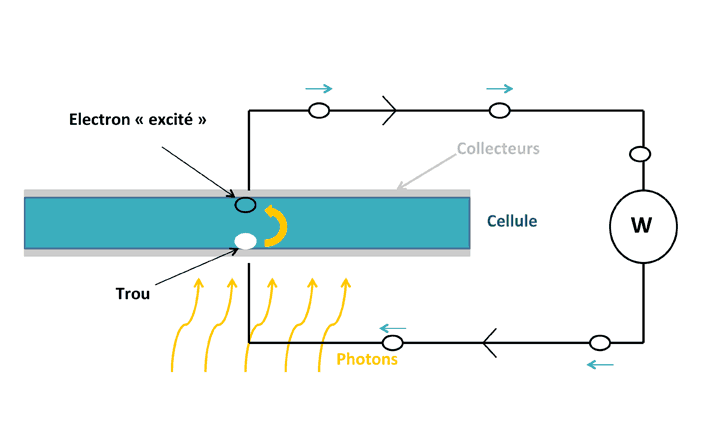
Types of photovoltaic cells
Photovoltaic cell types can vary from one solar panel to the next. These variations depend on the quality of the silicon used in their composition. Due to the significant efficiency gaps, it is important to select them with caution.
Monocrystalline silicon cells are the most expensive ones. They are also the most efficient, with an output ranging from 18 to 24%.
Polycrystalline silicon cells are lower in cost and efficiency, with an output ranging from 14 to 18%.
Lastly, amorphous silicon cells are the least efficient, with an output ranging from 5 to 7%. Needless to say, these are the least expensive cells.
For more information on this topic, please read our article on solar panel efficiency. It provides a thorough explanation of this subject matter.
How does a thermal solar panel work?
Now that we have seen how photovoltaic solar panels work, let us turn our attention to thermal solar collectors.
While photovoltaic panels convert sunlight into electricity, thermal solar panels convert sunlight into heat.
As a result, they are mainly used to produce domestic hot water but are also used in heating systems such as solar heating. Floor heating systems can benefit from this type of installation.
Here is how a thermal solar panel works: First, sunlight passes through glazed flat-plate collectors and strikes an absorber, which absorbs 80 to 90% of the sunlight.
Upon striking the absorber, the rays are converted into heat. The reason why the absorber captures the sun’s heat so well is because it has a dark coating.
How is this heat used, you may ask? The absorber carries it to a heat-transfer fluid by the process of conduction.
To avoid any heat waste in the heat-transfer fluid’s conduction, it is necessary to install an insulator. This prevents energy waste due to external air exposure.
How does a hybrid solar panel work?
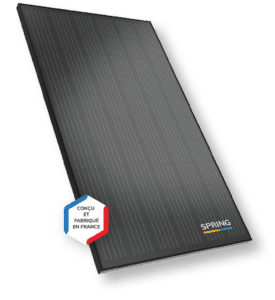
The focal point of interest in hybrid solar panels like the ones developed by DualSun is that they bring the thermal and photovoltaic systems together as one. A hybrid solar panel is therefore a combination of these two technologies.
The efficiency of a photovoltaic panel decreases as its temperature rises. To prevent this, the hybrid panel is constantly cooled by the water circulating in its back side. This operational difference means that the hybrid panel has greater photovoltaic efficiency than a simple photovoltaic panel.
This is achieved by means of a heat exchanger. The water circulating through this exchanger is warmed by the heat dissipated by the photovoltaic cells. Therefore, hybrid panels make use of all the sun’s incident energy and avoid the heat waste associated with photovoltaic panels.
To summarize, the front side generates electricity like any other photovoltaic panel. The thermal system underneath conserves the heat that would otherwise be wasted in a simple panel.
The hybrid panel therefore produces both electricity and domestic hot water. It is more efficient than a photovoltaic panel and allows for greater autonomy.
Other parts of a solar installation
A photovoltaic solar panel operates within a system. The electricity or heat generated by the solar panels in the point of production must be transferred to and stored in the point of consumption.
With thermal systems, the heat ends up in the storage tank. Unlike electrical energy, thermal energy is easy to store. Batteries are a complex subject, which is why we have a battery guide to teach you more about them.
What is an inverter and what does it do?
If the installation consists of photovoltaic solar panels, the generated output must be converted for domestic use. The domestic electric grid operates on alternating current, whereas the current generated by the photovoltaic solar panels is direct.
This calls for an inverter, a device that converts direct current output from the solar panels into alternating current that can be fed into the domestic electric grid. The modified current is then fit for household use. There are different types of inverters: centralized inverters, microinverters, and inverters with a power optimizer.
The centralized inverter is a high-power inverter. All panels are connected to it. While more cost-efficient, it also comes with a higher risk because a single inverter supports all the panels connected in series.
With a microinverter, however, each panel or pair of panels is connected to its own microinverter. This optimizes production because the installation is only partially affected if one microinverter fails.
Last but not least, an inverter with a power optimizer is a classic inverter with an added power optimizer. In plain terms, the optimizer functions much like a set of micro-inverters coupled to a centralized inverter.
How is efficiency tracked?
The efficiency of a photovoltaic installation depends on a great number of factors. These include the type and model of panels used, whether they are placed in the shade or not, the orientation of the roof, as well as the amount of sunshine the area receives.
To learn more, we invite you to consult the efficiency and production guide we have put together.
How are solar panels used for residential homes?
Different contract types
If you wish to power your home with solar energy, you can opt for self-consumption. This can be done with or without reselling surplus electricity or selling all generated electricity.
Self-consumption refers to the use of generated electricity to cover your own needs. As such, the output from the photovoltaic panels feeds directly into your domestic electric grid, powering your household appliances. This model is currently experiencing rapid growth in France. Self-consumption allows you to save on your utility bills, enhance your energy autonomy from the public grid, and reduce the carbon footprint of your home through the use of renewable energy.
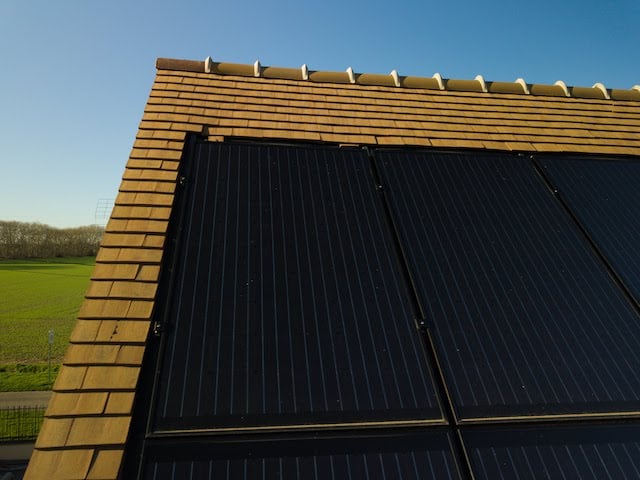
However, to maximize efficiency, it is necessary to synchronize high solar production periods (in the daytime) with consumption periods. This means that you may need to adapt your habits by, say, running your washing machine or dishwasher in the afternoon. Home automation tools can help you program these household operations.
Photovoltaic and thermal self-consumption
DualSun hybrid solar panels offer dual self-consumption by producing the electricity and hot water you need.
The electricity generated by the DualSun panel’s photovoltaic cells can be used to electrically power household facilities such as your appliances or lighting fixtures, thus helping you to become less reliant on traditional energy production. Moreover, you can decrease your electricity bills by generating energy locally.
The hyprid panels simultaneously produce hot water. Water is heated by solar energy and stored in the hot water tank to be used just like regular household hot water. You can take sun-heated showers while also saving on your hot water consumption!
Lastly, connecting the panels to a swimming pool can also offer several benefits. On the one hand, they can cover the electric consumption of the filter pump and thus decrease your electricity bills. On the other hand, they provide free solar heating for your swimming pool.
With DualSun, you can count on dual self-consumption to increase your energy autonomy and reap greater savings than you would by using classic solar panels. Find out just how much you can save by obtaining your personalized study with the help of our solar simulator.
To continue your reading, we recommend :
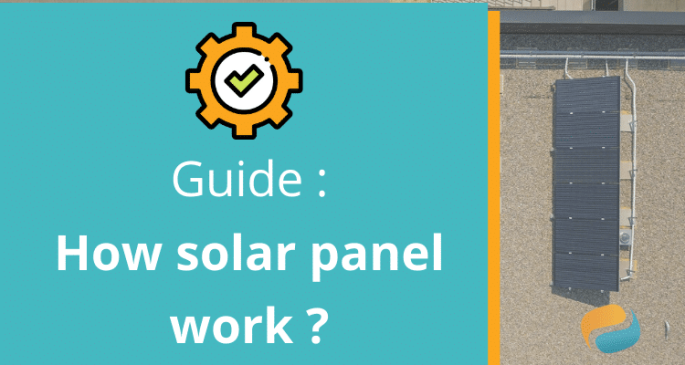
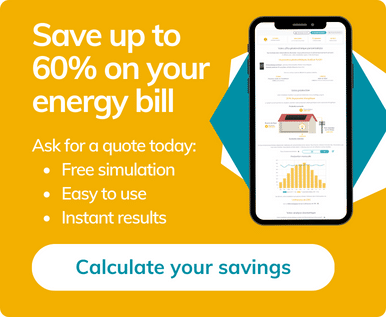
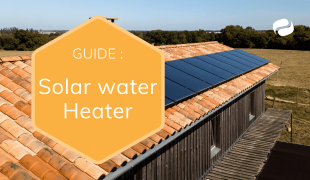
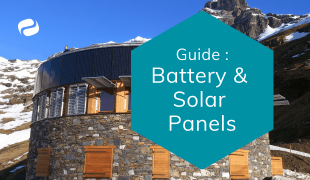
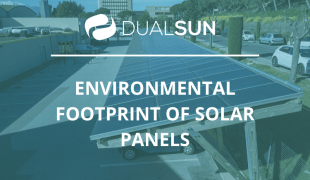
Aucun commentaire.
Leave a comment
Votre adresse e-mail ne sera pas publiée. Les champs obligatoires sont indiqués avec *